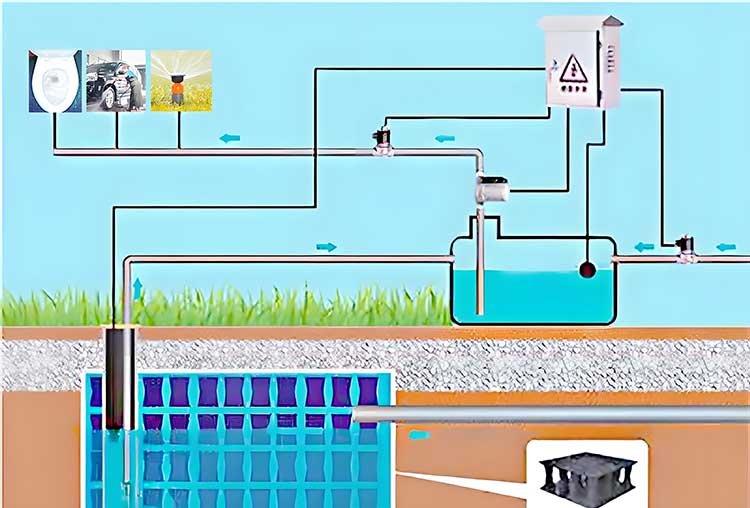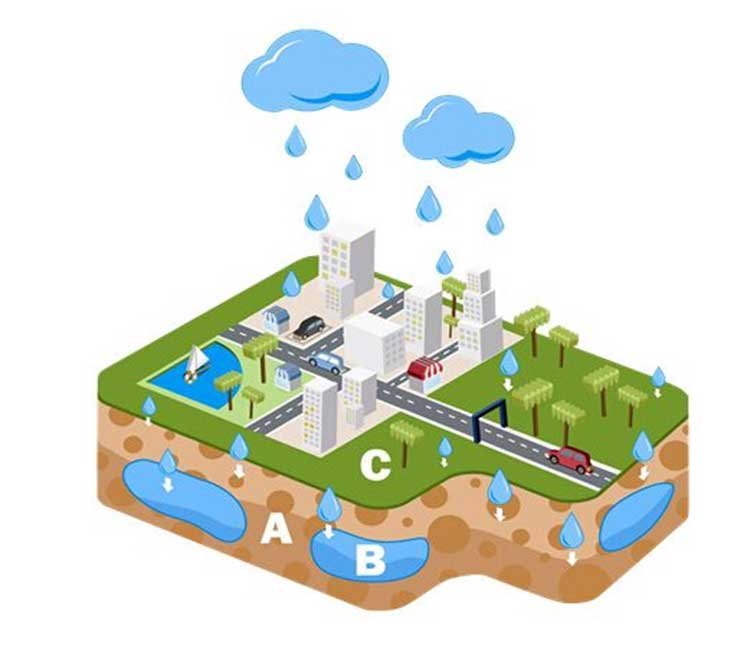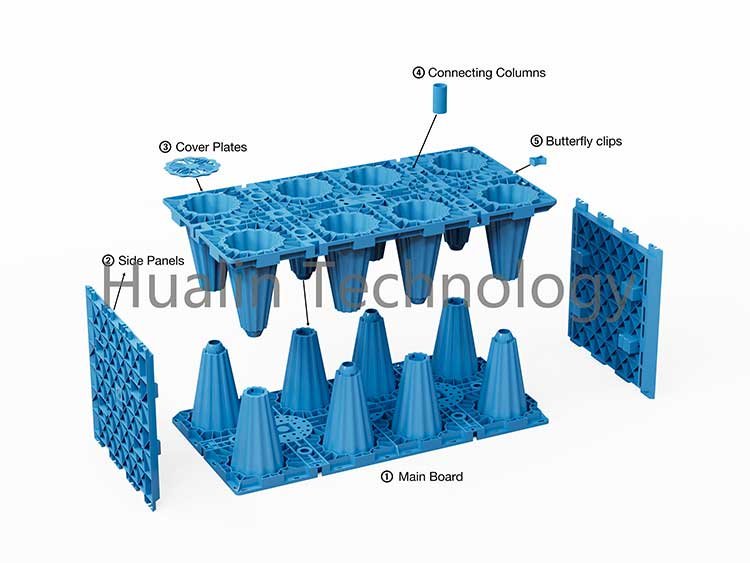Sponge City is a new generation of urban stormwater management concepts. It refers to cities that demonstrate excellent resilience in adapting to environmental changes and responding to natural disasters caused by rainwater. It can also be called a “water-resilient city.” The internationally accepted term is “low-impact development and stormwater system construction.” During rain, water is absorbed, stored, infiltrated, and purified, and the stored water is released and utilized when needed.
The practical application of “sponge city” materials demonstrates excellent water permeability, pressure resistance, wear resistance, and anti-slip properties, as well as environmentally friendly, aesthetically pleasing, easy-to-maintain, and sound-absorbing properties. These materials create “breathing” urban landscape pavements, effectively mitigating the urban heat island effect and reducing heat buildup on urban pavements.
- What is Rainwater Harvesting
- Rainwater Harvesting and utilization methods
- Urban rainwater collection and utilization
- Common concepts of rainwater harvesting and utilization
- The role of rainwater harvesting pool in rainwater collection system
- Rainwater harvesting module
- What is the harvesting rainwater used for?
- Kesimpulan
What is Rainwater Harvesting

Rainwater Harvesting can replenish urban groundwater, alleviate ground subsidence, regulate climate, purify air, promote urban greening, and prevent and control rain and flood disasters. It can also reduce the load on urban drainage and treatment systems, alleviate flood control pressure, reduce rainwater runoff pollution, and utilize urban rivers, lakes and various artificial and natural water bodies, swamps, and wetlands to regulate climate, curb urban heat island effects, and improve the urban ecological environment.
Rainwater Harvesting and utilization methods

Rainwater utilization is commonly divided into three types, namely direct rainwater utilization, indirect rainwater utilization and comprehensive rainwater utilization.
Direct use of rainwater
Direct rainwater utilization refers to the direct reuse of collected rainwater, with priority given to its use for residential miscellaneous water, landscape water, and cooling water. Due to the uneven distribution of rainfall throughout the year in most regions of my country, direct rainwater utilization often cannot meet water requirements and generally needs to be used in conjunction with other water sources as a backup.
Indirect use of rainwater
Indirect rainwater utilization involves treating rainwater before it infiltrates or recharges it into the ground, replenishing groundwater. In areas with low and uneven rainfall, where direct rainwater use is economically inefficient, indirect rainwater utilization may be an option.
Comprehensive utilization of rainwater
Comprehensive utilization of rainwater refers to combining direct and indirect utilization of rainwater according to specific conditions, and making maximum use of rainwater based on technical and economic analysis.
Urban rainwater collection and utilization
1.Roof rainwater collection and utilization: Use the roof as a rainwater collection surface for non-drinking water in households, public and industrial areas, such as irrigation, toilet flushing, laundry, cooling circulation and other greywater systems.
2.Roof greening and rainwater utilization. Roof greening is a way to reduce runoff, alleviate pollution and urban heat island effect, regulate building temperature and beautify the city.
3.The park collects and utilizes rainwater, which infiltrates into green spaces to maintain the green space and replenish groundwater.
4.Rainwater recharges groundwater. In some places with relatively good address conditions, rainwater recharge is carried out to artificially replenish groundwater.
Common concepts of rainwater harvesting and utilization

Rainfall volume refers to the maximum amount of rainfall, that is, the depth of rainfall. The depth of the water layer accumulated on the surface of the water after rainwater falls from the sky to the ground without evaporation, infiltration, or loss is usually measured in mm. It can also be expressed as the volume of rainfall per unit area (L/hm2).
(1) When analyzing rainfall, it is usually expressed in terms of unit time, such as (1) Annual average rainfall: refers to the average rainfall amount in each year obtained from many years of observation.
(2) Monthly average rainfall: refers to the average rainfall amount in each month obtained from many years of observation.
(3) Annual maximum daily rainfall: refers to the maximum rainfall amount on a single day in a year obtained from many years of observation.
(4) Design rainfall: refers to a certain rainfall amount (corresponding to a certain recurrence period), which can be used as the design basis or standard for the scale of rainwater utilization facilities. The maximum rainfall amount in 24 hours under a certain recurrence period is often used as the design rainfall. Note: The design and stormwater resistance of drainage pipes in various countries are not measured by millimeters of rainfall. It is primarily related to the stormwater intensity formula used in each country, and then to the stormwater design return period adopted by each country’s standards. In China, according to the standards, the stormwater design return period for general areas is 1-3 years, and for key areas it is 3-5 years.
The role of rainwater harvesting pool in rainwater collection system
Tangki Air Hujan Modular are primarily used to store rainwater after initial treatment. PP modular rainwater collection tanks are ideally suited for this purpose. Compared to traditional cement tanks, these offer advantages: longer lifespan, flexible design, easier transportation, simpler construction, and lower costs.
Rainwater harvesting module

Is the rainwater harvesting module made of PP plastic? It can be buried underground to collect rainwater for reuse. With the acceleration of urbanization, water shortages, environmental pollution, and ecological damage are becoming increasingly problematic. Rainwater, as a clean, economical, and convenient green water source, is gaining increasing attention.
What is the harvesting rainwater used for?
Rainwater from the road surface flows into the clear water tank through the collection pipe, and is then used for fire fighting, greening, and road washing; the square collects and purifies rainwater through waterways and uses it for landscaping, greening, and public toilets; buildings collect rainwater from the roof and ground and purify it for fire fighting, toilet flushing, greening, and wall and road washing.
Kesimpulan
Hualin Technology is a high-tech enterprise specializing in rainwater harvesting systems. It is a contract-abiding and creditworthy enterprise. The company has introduced advanced international technologies and, through years of accumulated experience, has consistently pursued independent innovation.
It has established a comprehensive rainwater utilization system for sponge cities, encompassing R&D, production, design, sales, construction, and after-sales service.